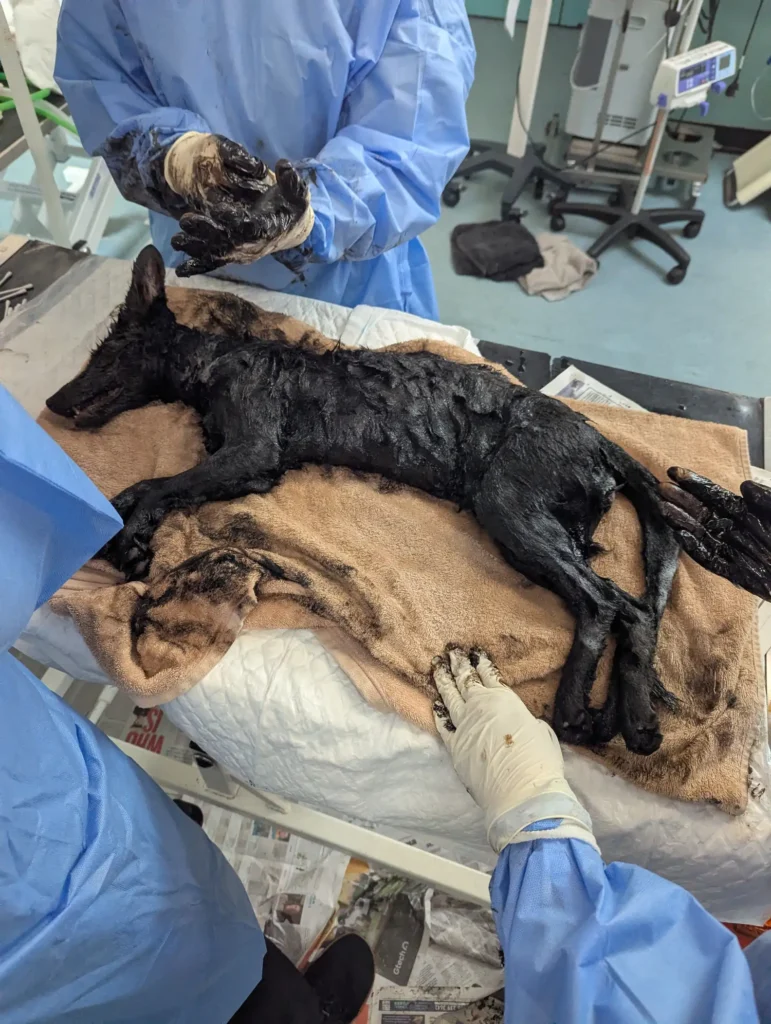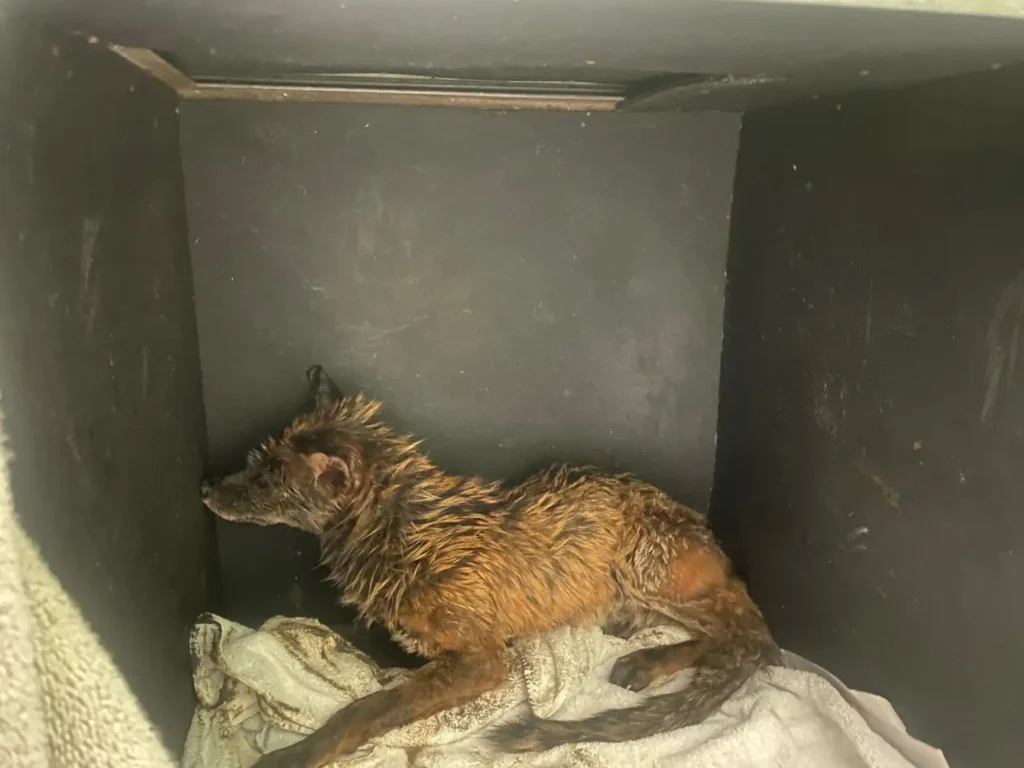“It’s a miracle he was spotted!”
Eyes in the Darkness: How a Trapped Fox Was Saved from a Tar-Like Nightmare
One quiet evening, as twilight painted the sky in soft purples and greys, a passerby in an industrial area noticed something unusual in the shadows. A pit of what looked like tar sat ominously beneath an abandoned building, its surface glinting faintly under dim light. But it wasn’t the pit itself that caught their attention — it was the faint glimmer of glowing eyes staring back.
Alarmed, the Good Samaritan leaned closer and realized the horrifying truth: an animal was trapped, almost completely submerged. They wasted no time and contacted the RSPCA for help, knowing the creature’s life depended on quick action.

A Dangerous Situation
The RSPCA dispatched Helen Smith, an experienced inspector, to the scene. Upon arrival, she was met with a disturbing sight. The pit, which she initially thought was tar, was actually thick heating oil that had leaked beneath the structure from a vandalized storage tank. Inside, a young fox was mired so deeply in the viscous black substance that only its nose, eyes, and ears were visible above the surface.
“This poor fox was completely immobilized in the thick, tar-like substance and couldn’t move,” Smith recounted. “We have no idea how long he had been there. It’s a miracle he was spotted in time.”

The Rescue
The fox’s plight was dire, and Smith knew this would be a challenging rescue. Using gloves and tools, she carefully worked to free the helpless animal from the pit. The fox’s body was completely entombed in oil, and every tug seemed to require Herculean effort.
“With some effort, I managed to pull the fox from the pit,” Smith said. The moment the fox was free, she rushed him to a nearby veterinary clinic, where a team of professionals awaited. As they sedated the fox to begin cleaning, the full extent of his condition became clear:
“I’ve never seen anything like it,” Smith said. “The fox was completely covered from head to toe in thick, black oil. You could barely tell it was a fox at all.”
A Grueling Clean-Up
The process of cleaning the fox was painstaking. The oil was so dense and clung so tightly to the fox’s fur that it took multiple days and several dedicated teams to make real progress. After an initial cleaning at the veterinary clinic, the fox was transferred to the RSPCA Stapeley Grange Wildlife Centre in Cheshire, where experts continued the clean-up and began his rehabilitation.
“It was the worst oil case we’ve ever seen,” one member of the team remarked. “Every inch of his fur was saturated, and it took incredible effort to remove it all.”
Despite his ordeal, the fox showed remarkable resilience. With each passing day, his fur grew cleaner, his energy returned, and he began to look more like the spry, agile animal he was meant to be.
Hope on the Horizon
Veterinary checkups revealed that the fox was relatively young, which played a crucial role in his recovery. After days of cleaning and careful observation, he was declared on track to make a full recovery. Once he regains his strength and natural instincts, the fox will be released back into the wild, where he belongs.
“This rescue was a true testament to teamwork and determination,” Smith said. “From the Good Samaritan who made the call to the vets and rehabilitation teams, everyone played a part in saving this fox’s life.”

A Reminder of Human Impact
While the fox’s story has a happy ending, it also serves as a stark reminder of how human actions — even unintentional ones, like vandalism — can have devastating effects on wildlife.
The RSPCA hopes this case will inspire others to remain vigilant and act when they see animals in distress. “It’s only because of that one passerby that this fox survived,” Smith said. “It shows how much of a difference one person can make.”
For now, the fox’s future looks bright, thanks to the kindness of strangers, the dedication of rescuers, and the unyielding spirit of a creature that refused to give up.
